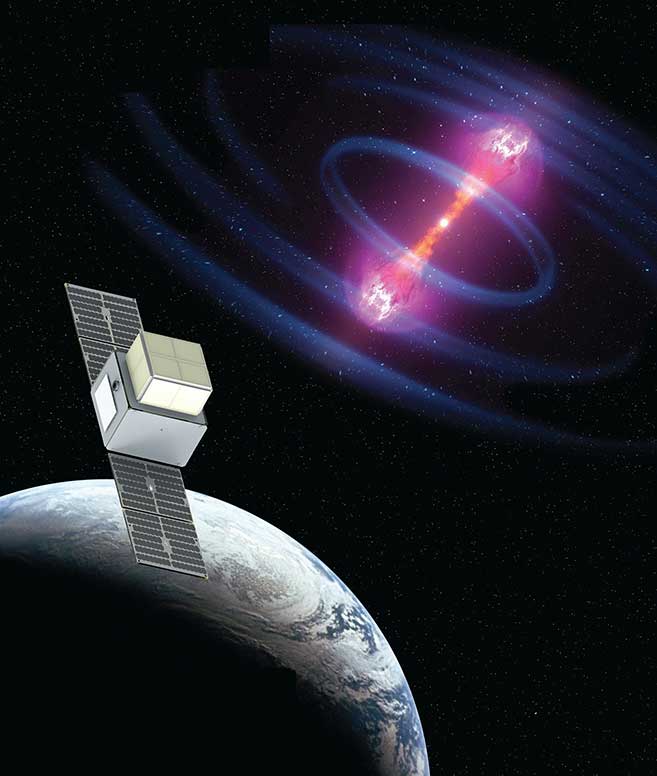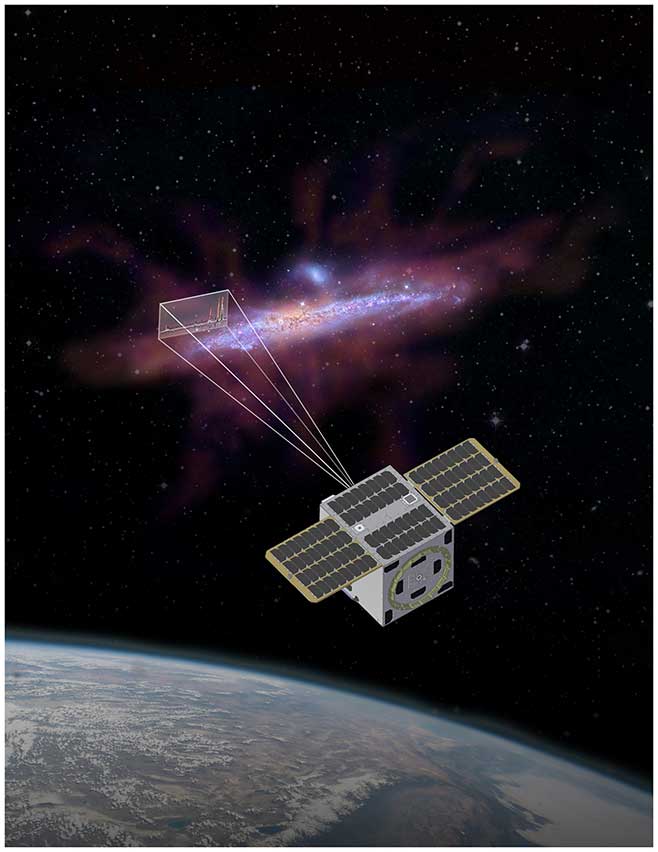Space Flight Laboratory (SFL) to Develop Two Small Satellites for NASA Astrophysics Pioneers Program
TORONTO, Ontario, Canada, 25 January 2022 – Space Flight Laboratory (SFL) will develop two small spacecraft for the new NASA Astrophysics Pioneers Program. SFL will provide the spacecraft platforms, perform system integration, and conduct system testing for the StarBurst and Aspera astrophysics missions, led by Marshall Space Flight Center (MSFC) and the University of Arizona, respectively.
Initiated in 2020, the NASA Astrophysics Pioneers Program seeks to develop small-scale astrophysics missions using small satellites, balloons, and modest International Space Station payloads to explore cosmic phenomena – each at a maximum mission cost of $20 million. SFL was chosen in 2021 to complete platform concept designs for two of the four first-round Astrophysics Pioneers missions.
“Following the system requirements reviews, NASA has given approval to both MSFC and the University of Arizona to proceed with mission implementation. SFL is proud to contribute to both teams moving forward with development of the ground-breaking StarBurst and Aspera missions,” said SFL Director Dr. Robert E. Zee. “Our microspace approach to building high-performance, affordable smaller satellites aligns perfectly with NASA’s goal of finding cost-effective new ways to conduct astrophysics research.”
SFL will develop the StarBurst platform on an ESPA-Grande variant of its scalable DAUNTLESS bus. Led by NASA Marshall Space Flight Center with Daniel Kocevski serving as principal investigator, the 250-kg StarBurst will detect high-energy gamma ray emissions from events such as the merger of neutron stars. These phenomena are believed to form most of the heavy metals, including gold and platinum, in the universe. StarBurst could observe up to 10 neutron star mergers every year.
For the Aspera mission, SFL will use a larger variant of its scalable DEFIANT microsatellite platform. Under leadership of the University of Arizona with Carlos Vargas as principal investigator, the 60-kg Aspera satellite will study galaxy evolution through observation of ultraviolet light. This data will reveal the inflow and outflow of hot gases in the space between galaxies, known as intergalactic medium, a major component of the universe.
In addition to building, integrating and testing the two small satellite buses, SFL will support the launch, commissioning, and operation of StarBurst and Aspera, which are tentatively scheduled for launch in 2025.
SFL is a unique microspace provider that offers a complete suite of nano-, micro- and small satellites – including high-performance, low-cost CubeSats – that satisfy the needs of a broad range of mission types from 3 to 500 kilograms. Dating from 1998, SFL’s heritage of on-orbit successes includes 72 satellites and distinct missions related to Earth observation, atmospheric monitoring, ship tracking, communication, radio frequency (RF) geolocation, technology demonstration, space astronomy, solar physics, space plasma, and other scientific research.
In its 24-year history, SFL has developed CubeSats, nanosatellites, and microsatellites that have achieved more than 173 cumulative years of operation in orbit. These microspace missions have included SFL’s trusted attitude control and, in some cases, formation-flying capabilities. Other core SFL-developed components include modular (scalable) power systems, onboard radios, flight computers, and control software.

Artist’s conception of the NASA StarBurst astrophysics mission. Credit: NASA Marshall Space Flight Center.

About Space Flight Laboratory (SFL)
SFL generates bigger returns from smaller, lower cost satellites. Small satellites built by SFL consistently push the performance envelope and disrupt the traditional cost paradigm. Satellites are built with advanced power systems, stringent attitude control and high-volume data capacity that are striking relative to the budget. SFL arranges launches globally and maintains a mission control center accessing ground stations worldwide. The pioneering and barrier-breaking work of SFL is a key enabler to tomorrow’s cost aggressive satellite constellations.
Download the specification sheet for all SFL platforms here.
Contacts:
Dr. Robert E. Zee
SFL Director
1-416-667-7400
info@utias-sfl.net
Follow SFL on Twitter @SFL_SmallerSats
Carlos Vargas, PI
University of Arizona
cjvargas@arizona.edu
Daniel Kocevski, PI
>NASA Marshall Space Flight Center
Daniel.kocevski@nasa.gov

